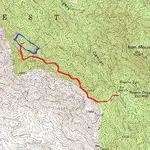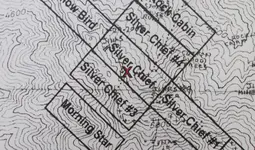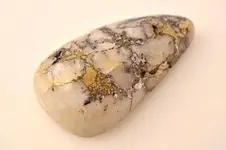View attachment 1323238
View attachment 1323239
I was able to obtain a copy of Jack Carlson's map location of the Silver Chief mine with the Pit Mine (aka the Covered Mine) marked with an X. Thanks to a good friend who sent it to me and also credit goes to TE Glover.
From my earlier posts you will see the topo map I posted with the route I take to get to the Pit Mine (in Red) and where I located the Silver Chief Mine (Blue rectangle).
Under my topo map is Jack Carlson's map with his location of the Silver Chief and an X that designates the Pit Mine.
You will see my map and Jack's map coincide with one another and are showing the exact same location of the Pit Mine.
This is why I believe the Pit Mine and the Silver Chief Mine are one and the same. I came by my map independently of Jack Carlson's research and had no knowledge of or input in the making of Jack's map.
I have since learned that TE Glover also wrote that Jack Carlson's map is correct, the Silver Chief and the Pit Mine share the same location.
I don't know where this leaves us in the discussion and as I stated I have no reason to want the two mines to be the same. I am just showing why, and explaining why I believe they are the same. Others may disagree and that is perfectly all right with me.
Matthew








 t again! But you make good sense, ...again!
t again! But you make good sense, ...again! 

